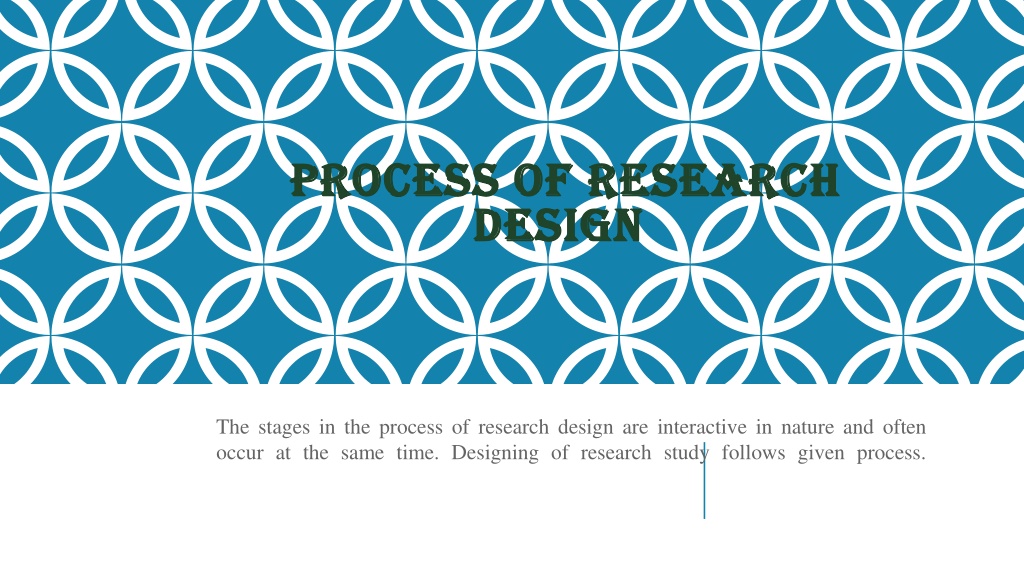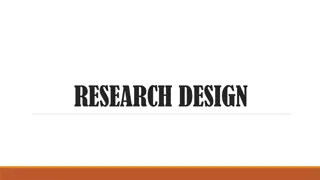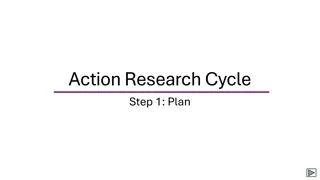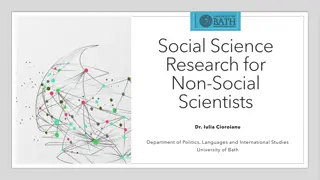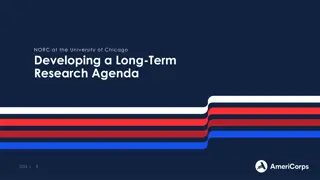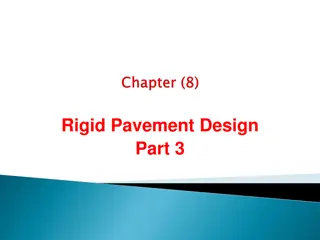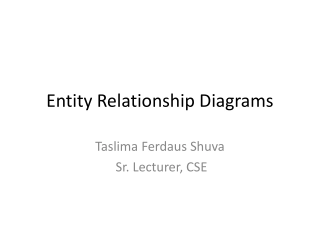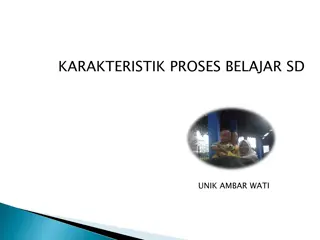Understand the Process, Stages, and Types of Research Design
The process of research design involves interactive stages that occur simultaneously, leading to the classification of research design into exploratory, descriptive, and experimental types. Each type serves a unique aim, from understanding problems to testing hypotheses through structured experimentation. This comprehensive overview provides insights into the intricate world of research design.
Download Presentation
Please find below an Image/Link to download the presentation.
The content on the website is provided AS IS for your information and personal use only. It may not be sold, licensed, or shared on other websites without obtaining consent from the author. Download presentation by click this link. If you encounter any issues during the download, it is possible that the publisher has removed the file from their server.
Presentation Transcript
PROCESS OF PROCESS OF RESEARCH DESIGN DESIGN RESEARCH The stages in the process of research design are interactive in nature and often occur at the same time. Designing of research study follows given process.
STEPS IN RESEARCH DESIGN STEPS IN RESEARCH DESIGN
CLASSIFICATION OF THE RESEARCH DESIGN: Research Design Conclusive Research Design Exploratory Design Secondary Resource analysis Causal Research Descriptive Research Comprehensive Case method Longitudinal Design Cross-sectional Design Expert opinion Multiple Cross sectional Design Single Cross sectional Design Focus Group
TYPES OF RESEARCH DESIGN TYPES OF RESEARCH DESIGN Based on the aim of study, there are three types of research design :
1) Exploratory Research Design : Exploratory research design aims to get a better understanding of the problem by explaining the concepts and developing hypothesis regarding the research study. Various techniques used in exploratory research study are literature survey. surveys, focus groups, case studies, etc. Exploratory research does not emphasize upon sampling, but tries to gather information from participants who are considered knowledgeable.
2) Descriptive Research Design : Unlike exploratory research, the aim of descriptive research is to describe the characteristics of a phenomenon is more rigid than exploratory research. It describes various aspects related to a population. It is the study that is designed to depict the population in much more accurate way. It attempts to describe, explain and interpret the conditions in much detailed approach. It examines a phenomenon that is occurring at a specific place and at specific time.
3) Experimental or Causal Research Design : Experimental or Causal or Conclusive research design is a type of research design which is predetermined and structured in nature. It is used for causal or conclusive research, which is conducted quantitatively. It is called causal research, because it is helpful in exploring the cause and effect relationship of a research problem. The main objective of casual research is to test the hypothesis which were defined in the exploratory Research Design. Causal research is simply opposite to the descriptive research, as with the help of experimentation, it can interpret whether the relationship is causal or not.
